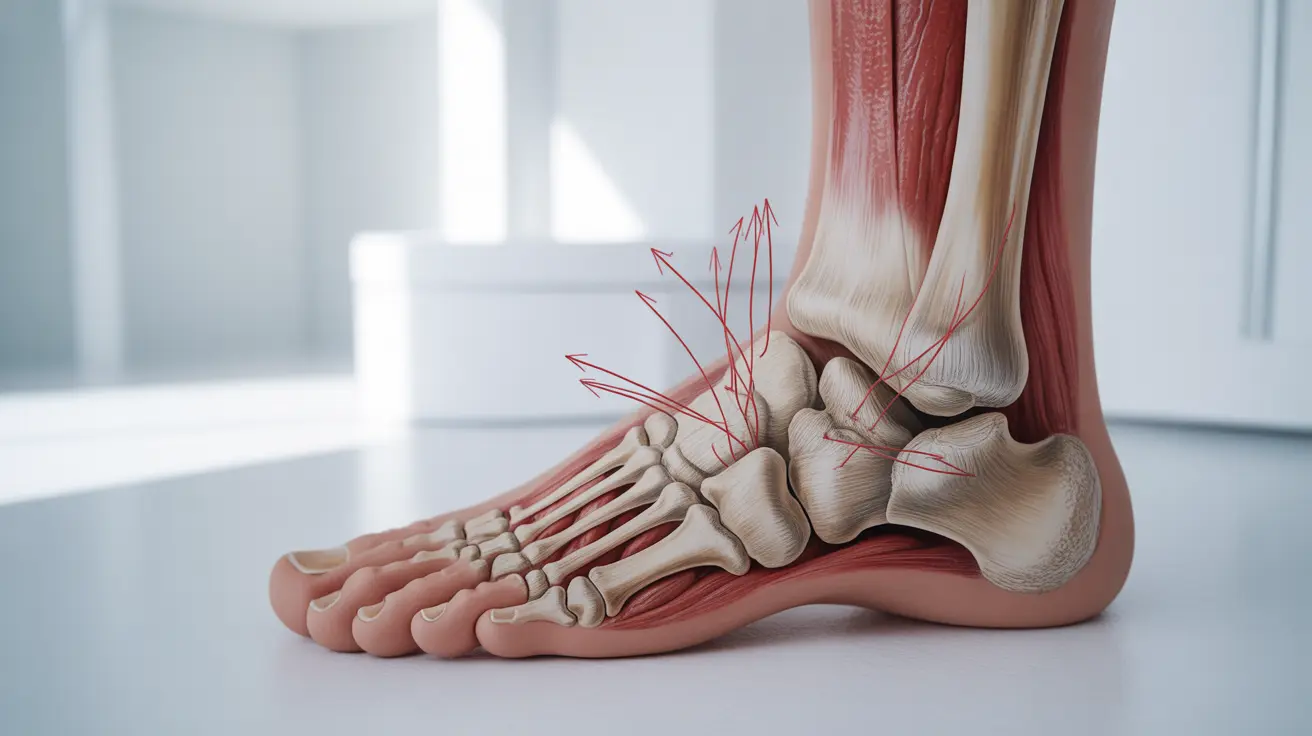A stress fracture in the foot can be a painful and frustrating injury that typically develops gradually from repetitive force or overuse. These tiny cracks in the bones of the foot often affect athletes and active individuals but can occur in anyone who suddenly increases their physical activity level or experiences prolonged stress on their feet.
Early recognition and proper management of foot stress fractures are crucial for optimal healing and preventing long-term complications. This comprehensive guide will help you understand the signs, diagnosis, treatment options, and prevention strategies for stress fractures in the foot.
Recognizing the Signs and Symptoms
Being able to identify the early warning signs of a stress fracture can help prevent the injury from worsening. Common indicators include:
- Pain that intensifies during weight-bearing activities
- Localized tenderness in a specific area of the foot
- Swelling on the top of the foot or outside of the ankle
- Pain that diminishes during rest but returns with activity
- Difficulty completing normal daily activities
Diagnostic Procedures and Imaging
Healthcare providers use various methods to confirm the presence of a stress fracture in the foot:
Physical Examination
Your doctor will carefully examine your foot, checking for tender areas and assessing your pain response to different movements.
Imaging Tests
Several types of imaging may be used to diagnose a stress fracture:
- X-rays (may not show early stress fractures)
- MRI (most effective for early detection)
- Bone scans (helpful for identifying stress reactions)
- CT scans (useful for complex cases)
Treatment Approaches and Recovery Timeline
The treatment of foot stress fractures typically follows a comprehensive plan:
Immediate Care
- Rest and activity modification
- Ice therapy to reduce swelling
- Elevation of the affected foot
- Protected weight-bearing as advised
Medical Interventions
Your healthcare provider may recommend:
- Protective footwear or walking boots
- Crutches or other mobility aids
- Pain management techniques
- Physical therapy exercises
Recovery Timeline
Most foot stress fractures heal within 6-8 weeks with proper care and rest. However, complete recovery can take longer depending on the location and severity of the fracture.
Prevention Strategies
Taking proactive steps can help prevent stress fractures:
Proper Footwear
- Choose shoes with adequate support and cushioning
- Replace athletic shoes regularly
- Use sport-specific footwear for different activities
Training Modifications
- Gradually increase activity intensity
- Include rest days in your exercise routine
- Cross-train with low-impact activities
Return to Activity Guidelines
When returning to sports or exercise after a stress fracture, follow these principles:
- Start with low-impact activities
- Gradually increase intensity and duration
- Listen to your body's signals
- Follow your healthcare provider's recommendations
Frequently Asked Questions
- What are the common symptoms and signs of a stress fracture in the foot?
Common symptoms include localized pain that worsens with activity, swelling, tenderness in a specific area, and pain that improves with rest but returns when resuming activities. The pain typically intensifies over time if the injury is not properly addressed.
- How is a stress fracture in the foot diagnosed and what imaging tests are most effective?
Diagnosis typically begins with a physical examination and medical history review. MRI is the most effective imaging test for early detection, while X-rays may not show stress fractures in their early stages. Bone scans and CT scans may also be used in certain cases.
- What are the best treatment options and how long does it take for a foot stress fracture to heal?
The primary treatment involves rest, activity modification, and protected weight-bearing. Most stress fractures heal within 6-8 weeks with proper care. Treatment may include wearing a protective boot, using crutches, and following a graduated return to activity plan.
- What activities and footwear should I avoid or use to prevent stress fractures in my foot?
Avoid sudden increases in activity intensity and repetitive high-impact exercises. Wear properly fitted shoes with good support and shock absorption. Replace athletic shoes regularly and use appropriate footwear for specific activities.
- How can I safely return to sports or exercise after recovering from a foot stress fracture?
Return to activity gradually, starting with low-impact exercises and slowly increasing intensity. Follow your healthcare provider's guidance, maintain proper form, and stop if pain returns. Cross-training can help prevent reinjury during the return to full activity.




